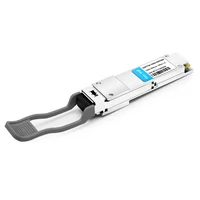SWDM4 (Shortwave Wavelength Division Multiplexing) transceivers are a new class of technology within the optical communication domain that is shaped by the need to support higher data transfer rates over the installed multimode fiber. In light of their capabilities and benefits, this handbook seeks to explore the basic design concepts and operating principles of SWDM4 transceivers. The document brings to light their contribution to the movement of large volumes of data at high speeds while maximizing the use of existing networks in order to minimize the total network upgrade costs. The objective of the document is to enable the readers to appreciate how SWDM4 transceivers enhance bandwidth penetration, improve network expansion, and reduce the cost of equipment and technology in order to load network engineers, IT personnel, and stern decision-makers with knowledge that makes the introduction of this advanced solution feasible.
What is SWDM4 Technology and How Does it Work?
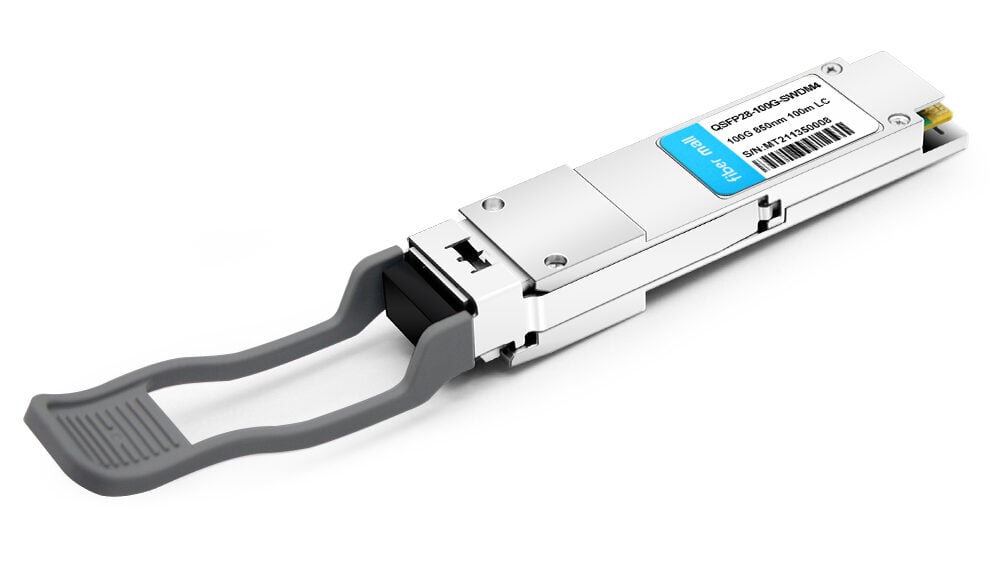
SWDM4 technology utilizes four different wavelengths at the shortwave region extending from approximately 850 nm to 940 nm and is intended for data transmission over multimode fiber. It uses vertical-cavity surface-emitting lasers (VCSELs) along with special wave division multiplexing (WDM) techniques to transmit four streams of data over a single fiber, which essentially increases the data capacity fourfold as compared to the standard solutions. SWDM4 combines several data channels on different wavelengths to maximize throughput, increases the transmission rates without the need to install new fiber pairs, and allows network interworking. This results in improving efficiency in the network operations and also reducing the cost of upgrades greatly.
Understanding the Basics of SWDM4 Transceivers
SWDM4 transceivers make use of VCSEL technologies in the integration of optics for the multiplexing of four wavelengths on multimode fiber. Its main goal is to deliver rates of up to 100Gbps over existing multimode fibers. The transceivers allow data to be sent and received; this shortens the distance and boosts speed. Using the WDM technique, they are able to increase the amount of data transmitted without putting in more fiber. All of the above points illustrate why SWDM4 transceivers are a low-cost solution for increasing network bandwidth with no upgrade requirement of existing systems and therefore, maximizing efforts directed towards network scalability today and in the future.
How Does Wavelength Division Multiplexing Work?
Wavelength division multiplexing, or WDM in short, is a more sophisticated technology in fiber optic networks that allows more than one signal wavelength to be carried on a single optical fiber, thus increasing the bandwidth. In this method, different wavelengths of laser light are used to send different data streams at the same time. In other words, WDM technology works by assigning a certain channel wavelength to each data, which enables each to be transmitted at the same time with no interference, which, in essence, increases the data capability of that network.
When speaking of SWDM4 transceivers, the WDM process can begin with splitting the laser on specific and separate data channels that are characterized by non-overlapping wavelength bands. These are usually several nanometers wide in the light spectrum, providing multiple concurrent data paths. Advanced filters and diffraction gratings are used at the ends of both transmission and reception to accurately combine and then split these wavelengths with great precision so that there is minimal crosstalk and a maximal amount of data information.
For example, a typical SWDM4 application employs the four wavelengths to be 850 nm, 880 nm, 910 nm, and 940 nm. Such arrangement enables the system to over 100Gbps throughput capacity in multimode fiber high-data-rate applications. WDM ensures precise wavelength utilization and employs advanced optical devices providing effective and expandable methods to fulfill bandwidth requirements and improve network capacity.
The Role of Multimode Fiber in SWDM4 Technology
In the case of SWDM4 technology, using the multimode fiber becomes important, as it enables tens and hundreds of data that can be encapsulated over short distances only, which makes it suitable for enterprise and data center networks. OM4 and OM5 multimode fibers have relatively larger core sizes of about 50 micrometers, and the VCSEL (Vertical-Cavity Surface-Emitting Laser) technologies employed are cheap. This configuration encourages the scattering and dispersion of light signals within large core diameters, which, in turn, multiplies the number of light modes that occur. In the instance of SWDM4 use, the multimode fiber allows sending four different wavelengths, which are 850nm, 880nm, 910nm, and 940nm, so that the efficiency is equalized maximum over distances that are conditions from 150meters using standard OM4 fiber, As per recent changes, the use of OM5 fiber increases this distance to about 440meters adding more scalability to the expanding network demands. Thus, the low cost and high bandwidth capabilities of the multimode fiber make it the technology of choice in implementing the SWDM4 in instances where there is short distance transfer of data and investment in network infrastructure is also minimized.
What are the Benefits of Using SWDM4 Transceivers in Data Centers?
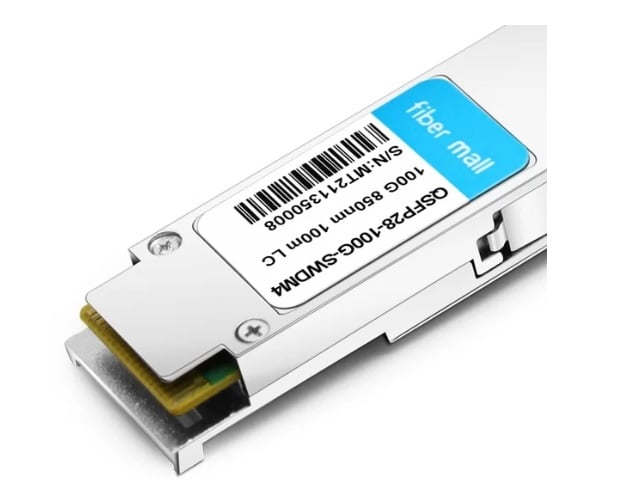
How SWDM4 Modules Increase Bandwidth Efficiency
Bandwidth efficiency significantly increases due to the implementation of multiple wavelengths over a single fiber strand within the SWDM4 modules. With the SWDM4 technology, multiple wavelengths transmitted over the OM4 or OM5 multimode fibers are utilized. Recent developments by Google that make use of this advancement were reported and are worth noting as they provide extra room for scalability and growth of the network. In light of the increasing demand for bandwidth, these advanced modules help streamline data center activities while also keeping operational costs low by reducing optical losses and simplifying dense fiber deployments.
Reducing Infrastructure Costs with SWDM4 Technology
The cost of the infrastructure of a data center can be reduced by the transmission of data by using a lesser number of fibers and employing SWDM4 technology. SWDM4 does not require a large number of standalone fiber pairs as typical parallel optics do; instead, it incorporates four wavelengths onto a single multimode fiber using SWDM4 transceivers. This streamlining reduces the necessity for excessive fiber cabling and fiber site infrastructure elements and, therefore, substantially reduces cost. As per estimates of industry analysts, “the adoption of SWDM technology can cut down the cabling costs by about 40-50 %.” This effectiveness also reduces installation and maintenance costs as few fibers would simplify the management of units and minimize the risks of surpassing the congestion threshold of the data center. By enabling the redesign and restructuring of fiber networks, the SWDM4 helps data center businesses expand and transform without requiring them and spending huge amounts of capital.
Compatibility with Existing Fiber Infrastructure
SWDM4 technology was designed in such a way that it can be implemented on the already existing multimode fiber infrastructures in the data centers so as to cut costs and expand their bandwidth capacity. Such compatibility is ideal for businesses that want to improve the performance of their networks without making major changes. The connectors are useful when OM3 and OM4 fiber optic cable systems are concerned, which allows the higher speed transmission fiber to be used without replacing the old fiber. Recent data indicates that the SWDM4, when used with OM4 fibers, offers transmission distances of up to 150 meters, which meets the needs of applications that require further distances within the data center. This flexibility makes it possible for SWDM4 technology to be strategically incorporated into different situations, paving the way for the expansion of the operations of the data center in the future without infringing on the existing systems.
How Does SWDM4 Compare to Other Optical Transmission Technologies?
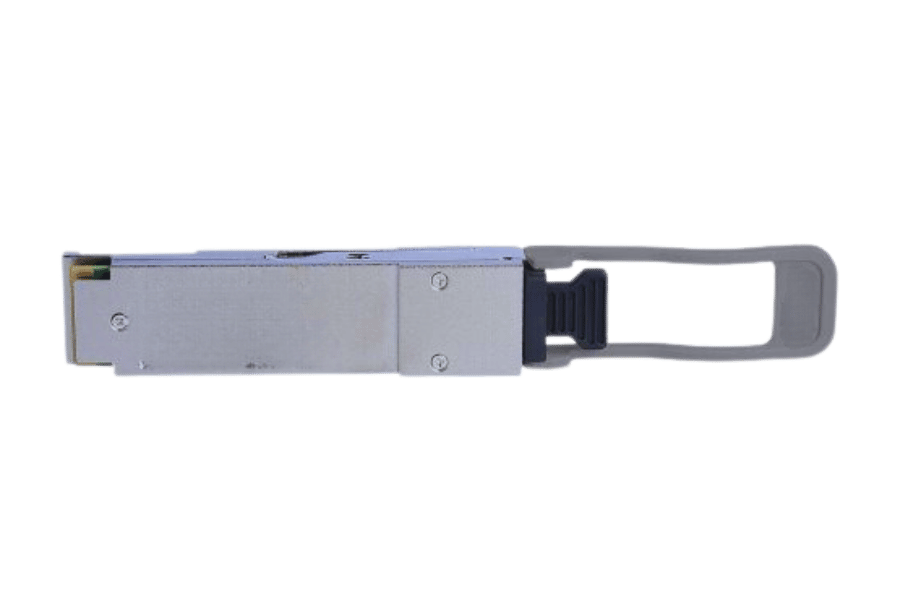
Differences Between SWDM4 and SR4 Modules
Optical communications employ SWDM4 and SR4 modules; however, they exhibit significant differences that serve the requirements of a particular network design as well as the environment. Here is a proper analysis of their differences:
Wavelength Utilization:
- SWDM4 Modules: Operates on four different wavelengths in the 850nm – 940nm range, allowing multiple signals over a single fiber which increases data capacity without increasing the number of fibers needed.
- SR4 Modules: Adopts only one wavelength, this is usually at 850nm while transmitting the signals through parallel fibers which increases the number of fibers necessary for that specific data rate.
Fiber Infrastructure:
- SWDM4 Modules: This most multimode SWDM modules are designed to be used with OM3 and OM4 fibers. Their very design provides easy upgrading while supporting the legacy infrastructure in use.
- SR4 Modules: Fiber infrastructure that the SR4 modules require is a parallel multimode fiber with eight fibers thus making the cabling systems rather complex.
Transmission Distance:
- SWDM4 Modules: Can extend transmission distances up to 150 meters over OM4 fibers and is suitable for most data center applications.
- SR4 Modules: Most often support average distances of 100 meters over OM4 fibers which are limiting when working with large data center layouts.
Data Rates:
- SWDM4 and SR4 Modules: Both SWDM4 and SR4 modules are the same in that they can achieve a maximum data rate of up to 100Gbps depending however on the method of fiber and the method of transmission as they differ significantly.
Scalability and Flexibility:
- SWDM4 Modules: Are relatively easier as they require less fiber, hence more flexible in scaling up within the existing environment.
- SR4 Modules: More fiber installations are needed. These modules are less flexible and might require more infrastructure changes.
Cost-Effectiveness:
- SWDM4 Modules: Might be beneficial in circumstances where increasing fiber capacity is difficult as it reduces operational and capital expenditure.
- SR4 Modules: Most cases, the cost goes up because the additional physical fibers and intricate cable solutions are required.
With such differences in mind, network engineers and data center managers can select the proper module in accordance with fulfillment of particular requirements, the capacities of the infrastructure or expectations of the ongoing processes in time.
Advantages of SWDM4 Over Traditional 40G Solutions
- Enhanced Bandwidth Efficiency: The SWDM4 modules make use of advanced wavelength multiplexing which enables much better usage of the existing fiber resources. These modules allow transmission of four wavelengths through one pair of fibers thus stretching the bandwidths without having any additional fiber strands.
- Decreased Fiber Density Requirements: In comparison with a conventional 40G solution which would require several fibers to operate efficiently, SWDM4 only needs two fibers for its operation. This reduction in fiber requirements makes cable management and installation easier and also reduces both the cost of deployment and maintenance in the future.
- Improved Scalability: Since existing infrastructures could support SWDM4 modules for up to 100G data rates, these modules are seen to have better scalability as they do not involve many changes in the present physical infrastructure in place.
These reasons make SWDM4 an attractive proposition in data center settings today, where bandwidth requirements are increasing, and cost efficiency is a primary goal.
Performance Analysis of 100G SWDM4 vs. 100G QSFP28
The performance of 100G SWDM4 and 100G QSFP28 modules can be assessed based on key metrics such as data rate capabilities, distance, power consumption, and reach.
- Capabilities: Both SWDM4 and QSFP28 support 100G data rates but with different approaches; the former is accomplished through the use of multiplexed four wavelengths on a single fiber pair while the later usually uses four 25G lanes directly modulated. This is beneficial in cases where fiber is scarce because it links well with the existing fiber backbone.
- Power Consumption: It is realistic to expect QSFP28 modules to perform better in energy consumption as they tend to use less power relative to the SWDM4 modules which are expected to consume moderate to higher power since they are engineered to perform higher data rates.
- Reach and Compatibility: The term reach and compatibility centre around fiber distance, for example SWDM4 can reach distances of up to 440metres and is designed for short to medium reach data centers and as such compatible with OM4 multimode fiber, on the other end of the scale we have QSFP28 supporting mode which allows its distance count to hit over 10 kilometers when paired with the right transceiver.
- Cost Efficiency: WhileSWDM4 reduces the number of fibers required, the cost of the modules could be more because of the wavelength λ management complexity. On the other hand, QSFP28 is one of the most common implementations in the industry and as a result, its cost is very competitive and supports many diverse networks.
Developments such as the availability of low power consuming QSFP28 modules and the improved efficiency of SWDM4 technologies impact the decision processes. These considerations should be made in the context of other specific network needs, the existing infrastructure and plans for future growth in order to find the suitable solution for the organizations’ data centers.
What are the Key Specifications of a QSFP28 SWDM4 Optical Transceiver?

Understanding the Multi-Vendor QSFP28 Transceiver Support
The multi-vendor support of QSFP28 transceivers is vital for improving the independence and growability of the interconnection networks. Validation of industry standards guarantees and facilitates the use of QSFP28 transceivers, which are produced by different manufacturers, into one network. When assessing such multi-vendor support, it is necessary to evaluate the vendors of switches and routers to enhance such interoperability. Moreover, recent trends focus on enhancing module design to increase their quality and reliability and thus their contribution to the stability of network solutions.
Answering Key Questions:
- Affinity with the Set-up of the System: QSFP28 transceivers have been engineered with transversality in mind and thus can operate alongside a number of existing vendors as well as other vendors that have not yet been established.
- Improvement Over Other Models: QSFP28 combines low cost and low power consumption and relatively higher distance together to serve different networking purposes.
- Factors when Selecting: In selecting QSFP28 transceivers power consumption and distance reach and cost in relation to the specific needs of the data center should all be addressed.
Technical Specifications and Capabilities of 100G QSFP28 SWDM4
The 100G QSFP28 SWDM4 is an optical transceiver that provides data rates of 100Gbps while providing a small form distance plug for space efficiency within the data center. This module also deploys Shortwave Wavelength Division Multiplexing (SWDM) technology that allows it to send data using a single pair of fibers with the use of four wavelength channels. This allows the technology to extend the reach of multimode fiber (MMF) up to 440 meters when using OM4 fiber, making it useful for cases that involve more extended use of fiber.
Other technical details are the usage of a standard MTP / MPO fiber connector which offers dense cabling and installation options. The high return on investment is brought about by the transceiver with low energy consumption of less than about 3.5 Watts, which contributes to the energetic efficiency that is required in large deployments. Moreover, the QSFP28 SWDM4 module adheres to IEEE 802.3bm and MSA-specified standards, which enhance their compatibility and support by diverse vendors and networking equipment. Its construction is also compatible with Digital Diagnostic Monitoring (DDM) capabilities which offer the possibility to monitor the parameters of the device during its operation in order to improve the reliability of the device and the quality of its maintenance.
Optimal Use Cases for QSFP28 SWDM4 Transceivers
The 100G QSFP28 SWDM4 transceivers are seen as the best option to be deployed in high-density data center environments, as the efficient use of already installed multimode fiber infrastructure is of great significance. They are especially beneficial in cases where OM4 comes into play, and the requirement is to increase the distance of multimode fiber to about 440 meters, eliminating the need for extensive fiber cabling overhauls. These transmitters have both low power consumption and high interoperability, both of which have proven to be effective in applications requiring high-speed data transfer, including hyper-scale data centers, enterprise networks, and cloud computing environments, which are seeing a constant increase in bandwidth demand. Such compatibility with packing standard MTP/MPO connectors makes the incorporation of these transceivers into current networks easier without the need for extensive network upgrades, thus proving to cost-effective in terms of scaling and flexibility. As these transceivers consume low amounts of energy and conform to IEEE 802.3bm and MSA specifications, they can be deployed without worrying about their compatibility with a vast array of networking devices, which makes them future-ready for rapidly changing network requirements.
How to Implement SWDM4 Technology in Your Network?
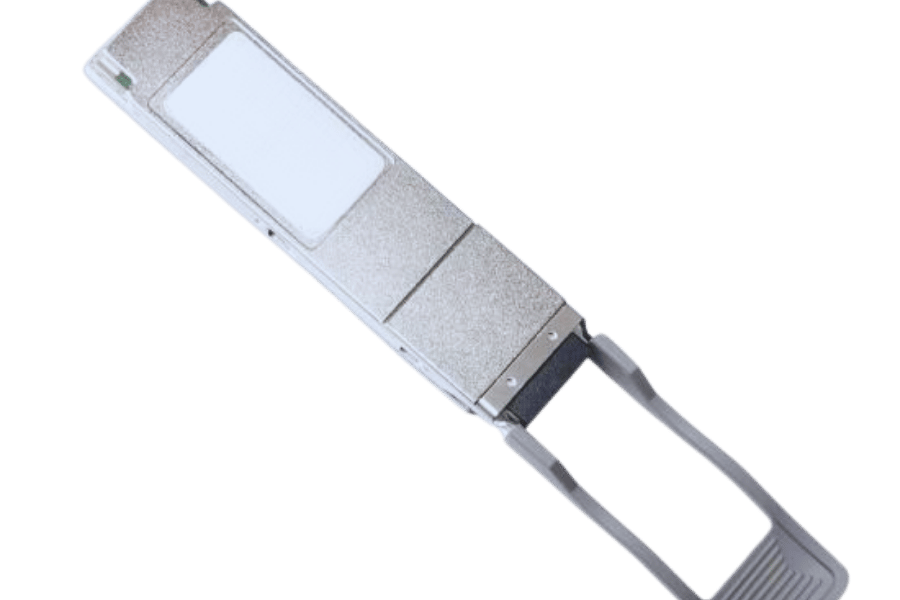
Step-by-Step Guide to Installing SWDM4 Modules
- Analyze Network Requirements: Start with evaluation of the existing network resources to establish the readiness level for SWDM4 technology usage. Ascertain the bandwidth specification and remedial measures on the existing multimode fiber structures.
- Obtain Necessary Equipment: Obtain the relevant QSFP28 SWDM4 transceivers and affirm that MTP/MPO connectors are available. Cross check that the transceivers comply with the essential IEEE 802.3bm-MSA MMF based transceiver standards applicable to the intended network environment.
- Install Fiber Optic Cables: Check that the multimode fibers are properly arranged and all the connections between network devices are firm. In order to achieve the best performance where the reach is limited to up to 300 or 440 meters, do use OM3 and OM4 fiber respectively.
- Insert SWDM4 Modules: Proceed to insert the QSFP28 SWDM4 transceivers into the switch/router ports; pay attention to the individual locality of the matching ports on the switch or router. To avoid improper contact, follow the manufacturer’s instructions on the way to properly seat the modules on the connectors.
- Configure Network Devices: Proceed to the network management S/W to carry out the required configurations aimed at optimizing SWDM4 performance. Enable DDM features so that the functional parameters of the transceiver can be monitored and managed.
- Test and Validate Performance: Thorough examinations of the network should be done to confirm the completion of the network installation for the network design and performance specification objectives. Make use of network tools for diagnostics to ascertain the transmission parameters of data throughout the network design required limitations.
- Monitor and Maintain: Observe the transceiver parameters on the DDM routinely to eliminate opportunities for any conceivable faults. Maintenance checks have to be planned for the purpose of ensuring network reliability and increasing the operational life of components in situ.
Ensuring Compatibility with LC Connectors and MMF 850-940nm
It is vital to choose such LC connections and MMF regarding the 850–940 nm range that are custom-made or approved for these specifications. First of all, check if your LC connectors were designed for multimode fibers and operate in the range optimized for your network. Use fiber optics rated OM3 or OM4 due to their high bandwidth data substitution over this wavelength range. Also, do validate with the features provided by prominent suppliers of network components. Finally, when all preparations are over, and installation is done, apply strong testing methods to check performance and make sure these components perform well with each other within your network.
Optimizing SWDM4 for Enhanced Data Center Performance
In order to enhance and improve the performance of data centers, it is crucial to consider fiber utilization and data throughput while minimizing latency. SWDM4 Wavelength Division Multiplexing allows four channels to be sent across a pair of multimode fibers transmitting light with wavelengths between 850nm and 940nm. This results in a reduction in the volume of cabling needed, which translates into cost savings and lower infrastructure requirements.
Recent reports indicate that data centers have been able to achieve up to 100 Gb/s per fiber pair using SWDM4 technology, which boosts connection efficiency while taking up less physical space. The implementation process involves aligning the LC connectors and the OM4 fibers with the SWDM4 setups. Such assessments should include link testing, a performance that gauges the signal quality, and the bit error rate (BER) analysis so that a high-quality signal is transmitted. The combination of such improvements as SWDM4 coupled with smarter management of data center infrastructure (DCIM) would also allow better monitoring of network elements in real-time.
Reference Sources
Frequently Asked Questions (FAQs)
Q: What are the characteristics of a 100G SWDM4 transceiver?
A: A 100G SWDM4 transceiver is an optical transceiver module which has been designed and manufactured in such a way that it allows the implementation of SWDM4 technology enabling the transmission of high speeds of 100G Ethernet traffic. This would use data transmission modes over currently existing duplex multimode fiber (MMF) which uses an array of wavelengths within the range of 850 nanometers and 940 nanometers.
Q: How does SWDM4 technology help in minimizing the extra expenditure required in upgrading a network?
A: SWDM4 technology helps to minimize extra expenditure by enabling the upgrading of the network to 100G Ethernet while using already installed duplex fiber. This way it is possible to implement high-speed data transmission without having to deploy new cabling systems, thus safeguarding investments in the present fiber plant.
Q: How does spending money on a QSFP transceiver that has been made using SWDM4 technology help?
A: QSFP transceiver made using SWDM4 technology can be of advantage in that it can provide larger bandwidths and economizes on the already existing duplex cable infrastructures. This also extends the distance it can be used over MMF which is useful in the data centers where cable and space availability are critical components of operations.
Q: How does MSA facilitate a process of meeting the requirements in relation to SWDM4 transceivers?
A: MSA, or Multi-Source Agreement, promotes and guarantees compatibility of SWDM4 transceivers by developing standards applicable to all vendors of optical modules. This allows different vendors to create interworking transceiver modules, and this, in turn, enables users to use multi-vendor solutions without worrying about compatibility issues.
Q: What kind of distance can a SWDM4 optical module cover over MMF?
A: The SWDM4 optical module can use OM4 multimode fiber to transmit a signal for a maximum of 150 meters which makes it more applicable in a case where there is always a need for wide coverage like big data centers and enterprises.
Q: Why is DDM necessary for an optical transceiver module?
A: DDM or Digital Diagnostic Monitoring in an optical transceiver module is critical in that it allows one to view the temperature, power, and signal at their condition in real time. This is an added advantage since it helps maintain the standard of our products through the use of predictive maintenance and the early detection of faults.
Q: Are SWDM4 transceivers environmentally tested?
A: Yes, A SWDM4 transceiver will undergo environmental testing in order to check its reliability and performance. The testing performed includes subjecting all modules to temperatures and or humidity to test the module to make sure that the performance and reliability have already been achieved.
Q: What allows a SWDM4 QSFP28 module to integrate high-density networking capabilities?
A: Integration of high-density networking capabilities with the SWDM4 QSFP28 module is easy due to its compact and pluggable form factor that easily slots into QSFP ports for high port density. Then, being able to transmit over existing duplex fiber enables data centers to host networks that are expanding without causing a lot of rewiring requirements.
Q: Why are operating wavelengths between 850nm and 940nm important in SWDM4 optic systems?
A: Those wavelength limitations are useful in SWDM4 optic systems as they permit the launch of different channels of data over the same fibre. Hence, the total required bandwidth for data transmission is reduced, and the requirement of parallel fibers for a single transmission is cut back, thus improving the efficiency of the use of the available fibre.

